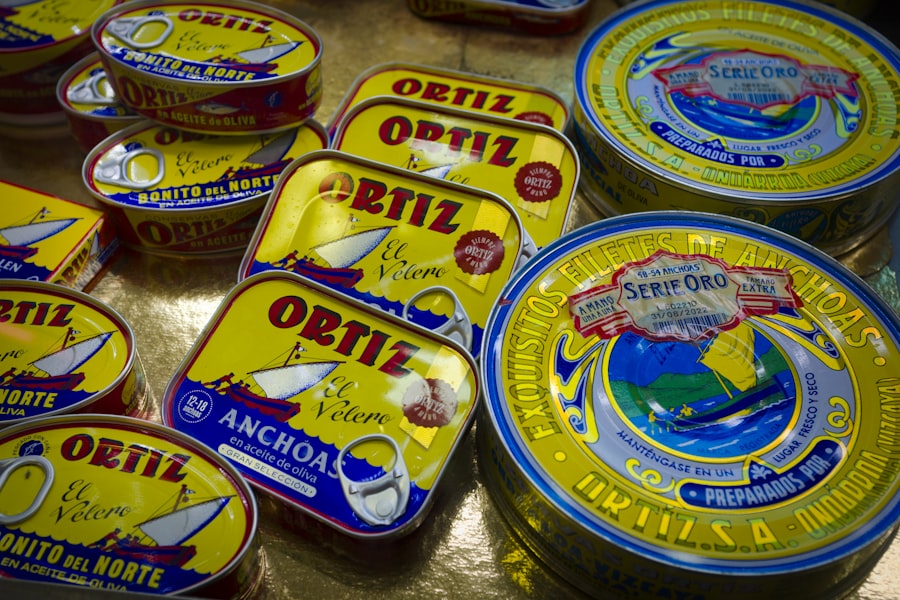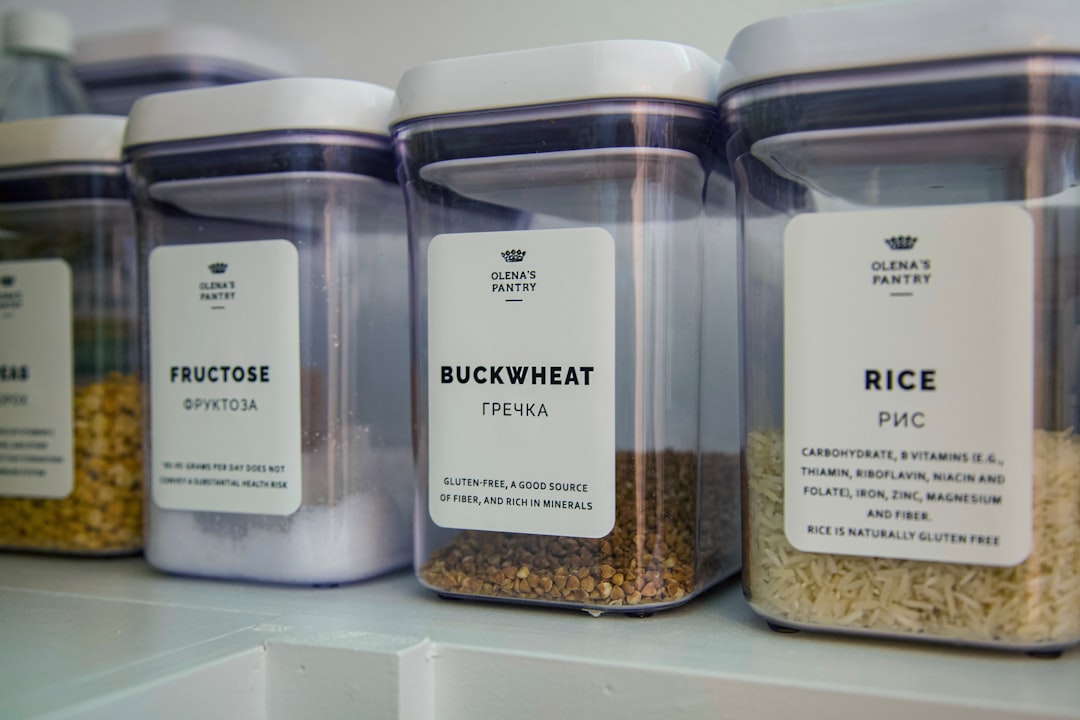In recent years, the food industry has witnessed a significant rise in the use of deceptive food labels. As consumers become increasingly health-conscious and environmentally aware, companies have adapted their marketing strategies to capitalize on these trends. This shift has led to a proliferation of labels that may not accurately reflect the true nature of the products being sold.
Terms like “natural,” “organic,” and “healthy” are often prominently displayed, enticing consumers to make purchases based on misleading claims. This phenomenon raises critical questions about the integrity of food labeling and the ethical responsibilities of manufacturers. The rise of deceptive food labels is not merely a marketing tactic; it reflects a broader cultural shift towards transparency and authenticity in consumer goods.
However, the reality is that many labels are designed to mislead rather than inform. As consumers navigate grocery store aisles filled with colorful packaging and enticing claims, they often find themselves at a disadvantage, unable to discern which products genuinely align with their values and health goals. This situation has created a pressing need for greater awareness and understanding of food labeling practices.
Key Takeaways
- Deceptive food labels use misleading terms and hidden additives that confuse consumers.
- Big food companies and aggressive marketing contribute significantly to label misinformation.
- Misleading labels can negatively impact public health by obscuring true ingredient content.
- Government regulations and consumer advocacy play crucial roles in improving label transparency.
- Educating consumers on reading labels and recognizing deceptive practices is essential for healthier choices.
Understanding Misleading Terminology
Misleading terminology is a cornerstone of deceptive food labeling, often leaving consumers confused about what they are actually purchasing. Terms such as “all-natural” or “made with real fruit” can evoke a sense of healthfulness, yet they lack standardized definitions. For instance, the term “natural” is not regulated by the Food and Drug Administration (FDA), allowing manufacturers to use it freely, regardless of the actual ingredients in their products.
This ambiguity can lead consumers to believe they are making healthier choices when, in fact, they may be consuming highly processed items laden with sugar and preservatives. Moreover, phrases like “low-fat” or “sugar-free” can also be misleading. While these terms suggest a healthier option, they often come with caveats.
For example, low-fat products may contain added sugars to enhance flavor, negating any potential health benefits. Similarly, sugar-free items might be laden with artificial sweeteners that can have adverse effects on health. Understanding these nuances is crucial for consumers who wish to make informed decisions about their food choices.
Hidden Ingredients and Additives

One of the most concerning aspects of deceptive food labeling is the presence of hidden ingredients and additives that are not immediately apparent to consumers. Many processed foods contain a long list of ingredients, some of which may be difficult to pronounce or recognize.
However, many consumers are unaware of what these substances are and how they may impact their health. For instance, artificial colors and flavors are commonly used in food products to make them more visually appealing or palatable. While these additives may enhance the consumer experience, they can also pose health risks, particularly for individuals with sensitivities or allergies.
Additionally, preservatives like sodium benzoate or BHA (butylated hydroxyanisole) are often included to prevent spoilage but have been linked to various health concerns. The lack of transparency regarding these hidden ingredients underscores the importance of scrutinizing food labels and understanding what goes into the products one consumes.
The Impact on Public Health
| Metric | Description | Value | Unit | Year |
|---|---|---|---|---|
| Life Expectancy | Average number of years a person is expected to live | 78.9 | Years | 2023 |
| Infant Mortality Rate | Number of infant deaths per 1,000 live births | 5.6 | Deaths per 1,000 live births | 2023 |
| Obesity Prevalence | Percentage of adults classified as obese | 36.2 | Percent | 2023 |
| Smoking Rate | Percentage of adults who smoke tobacco | 14.0 | Percent | 2023 |
| Access to Clean Water | Percentage of population with access to safe drinking water | 91.5 | Percent | 2023 |
| Vaccination Coverage | Percentage of children receiving recommended vaccines | 85.7 | Percent | 2023 |
| Air Quality Index (AQI) | Average annual air quality index value | 42 | AQI | 2023 |
| Mental Health Prevalence | Percentage of adults diagnosed with mental health conditions | 20.3 | Percent | 2023 |
The impact of deceptive food labeling on public health cannot be overstated. As consumers unknowingly purchase products based on misleading claims, they may inadvertently contribute to rising rates of obesity, diabetes, and other diet-related diseases. The confusion surrounding food labels can lead individuals to make poor dietary choices, believing they are selecting healthier options when they are not.
This disconnect between perception and reality poses significant challenges for public health initiatives aimed at promoting better nutrition. Furthermore, the prevalence of misleading labels can erode trust in the food industry as a whole. When consumers feel deceived by marketing tactics, they may become skeptical of all food products, leading to increased anxiety around food choices.
This distrust can hinder efforts to encourage healthier eating habits and foster a more informed public. Addressing the issue of deceptive labeling is essential for improving public health outcomes and restoring consumer confidence in the food supply.
The Role of Marketing and Advertising
Marketing and advertising play a pivotal role in shaping consumer perceptions of food products. Companies invest heavily in creating appealing packaging and persuasive messaging that highlights specific attributes while downplaying less favorable aspects. This strategic approach often leads to an emphasis on certain ingredients or benefits while obscuring others that may be less desirable.
As a result, consumers may find themselves drawn to products based on clever marketing rather than an accurate understanding of their nutritional value. The influence of marketing extends beyond individual products; it shapes broader trends in consumer behavior. For example, the rise of plant-based diets has prompted many companies to market their products as “vegan” or “plant-based,” even if they contain minimal actual plant ingredients.
This trend reflects a growing demand for healthier options but also highlights the potential for exploitation by companies seeking to capitalize on consumer preferences without delivering genuine value. As marketing continues to evolve, it is crucial for consumers to remain vigilant and discerning in their choices.
The Influence of Big Food Companies

Big food companies wield significant power in shaping food labeling practices and influencing consumer behavior. With vast resources at their disposal, these corporations can create marketing campaigns that effectively promote their products while downplaying any negative aspects. Their ability to dominate market share allows them to set trends and establish norms within the industry, often at the expense of smaller producers who prioritize transparency and quality.
Moreover, the lobbying efforts of big food companies can impact regulatory frameworks surrounding food labeling. By exerting pressure on policymakers, these corporations can influence legislation that governs labeling practices, potentially leading to weaker regulations that favor their interests over consumer protection. This dynamic creates an environment where deceptive labeling can thrive, making it essential for consumers to advocate for stronger regulations and greater accountability within the food industry.
Government Regulations and Oversight
Government regulations play a crucial role in ensuring that food labeling practices are transparent and truthful. However, the effectiveness of these regulations varies significantly across different regions and countries. In some cases, regulatory bodies like the FDA have established guidelines for certain claims, but loopholes often exist that allow companies to exploit them.
For instance, while organic labeling is regulated, terms like “natural” remain largely unregulated, leaving consumers vulnerable to misleading claims. The challenge lies in balancing the interests of consumers with those of the food industry. Stricter regulations could enhance consumer protection but may also face pushback from companies concerned about compliance costs and potential impacts on their bottom line.
As such, ongoing dialogue between regulators, industry stakeholders, and consumer advocates is essential for developing effective policies that prioritize public health while fostering innovation within the food sector.
Consumer Advocacy and Awareness
Consumer advocacy plays a vital role in addressing the issue of deceptive food labeling. Advocacy groups work tirelessly to raise awareness about misleading claims and promote transparency within the food industry. Through education campaigns, research initiatives, and lobbying efforts, these organizations strive to empower consumers with the knowledge needed to make informed choices about their food.
In recent years, there has been a growing movement towards greater transparency in food labeling practices. Consumers are increasingly demanding clarity regarding ingredient sourcing, production methods, and nutritional content. This shift has prompted some companies to adopt more honest labeling practices in response to consumer pressure.
As awareness continues to grow, it is likely that more individuals will become advocates for change within their communities, further driving demand for accountability in the food industry.
The Importance of Reading Labels
Reading labels is an essential skill for consumers seeking to navigate the complexities of modern food products. By taking the time to examine ingredient lists and nutritional information, individuals can make more informed decisions about what they consume. Understanding how to interpret labels empowers consumers to identify potentially harmful additives or misleading claims that may not align with their dietary preferences or health goals.
Moreover, reading labels fosters a deeper connection between consumers and their food choices. It encourages individuals to consider not only what they are eating but also where it comes from and how it was produced. This awareness can lead to more mindful consumption habits and a greater appreciation for quality ingredients over flashy marketing gimmicks.
Strategies for Avoiding Deceptive Labels
To avoid falling victim to deceptive labels, consumers can employ several strategies that promote informed decision-making. First and foremost, individuals should prioritize whole foods over processed items whenever possible. Fresh fruits, vegetables, grains, and lean proteins typically have fewer additives and clearer ingredient lists than packaged products.
Additionally, consumers should familiarize themselves with common misleading terms and claims found on labels. By understanding what phrases like “light,” “gluten-free,” or “fortified” truly mean, individuals can better assess whether a product aligns with their dietary needs or preferences. Seeking out third-party certifications—such as USDA Organic or Non-GMO Project Verified—can also provide reassurance regarding product integrity.
The Future of Food Labeling
The future of food labeling is likely to be shaped by ongoing consumer demand for transparency and accountability within the industry. As awareness around health issues continues to grow, companies may be compelled to adopt more honest labeling practices in order to maintain consumer trust. Innovations in technology could also play a role in enhancing transparency; for instance, blockchain technology has the potential to provide traceability for food products from farm to table.
Moreover, regulatory bodies may respond to public pressure by implementing stricter guidelines governing food labeling practices. As consumers become more educated about nutrition and ingredient sourcing, they will likely continue advocating for clearer labeling standards that prioritize health over marketing tactics. Ultimately, the future of food labeling will depend on a collective effort from consumers, industry stakeholders, and regulators working together towards a more transparent and trustworthy food system.
A related article that delves into this topic is titled “Food Labels That Fooled America,” which explores various claims made by food manufacturers that may not align with the actual contents of their products. You can read more about it in this insightful piece: Food Labels That Fooled America.
WATCH THIS! The $10 Billion Lie: Why Your “Dolphin-Safe” Tuna Isn’t Safe
FAQs
What are food labels?
Food labels are informational tags found on food packaging that provide details about the product, including ingredients, nutritional content, serving size, and sometimes health claims.
Why are food labels important?
Food labels help consumers make informed choices about the foods they purchase and consume by providing essential information about nutrition, allergens, and ingredient content.
What does the term “food labels that fooled America” refer to?
This phrase refers to instances where food labels have been misleading or deceptive, causing consumers to believe a product is healthier or different than it actually is.
How can food labels be misleading?
Food labels can be misleading through vague language, unregulated health claims, use of buzzwords like “natural” or “organic” without clear definitions, or by emphasizing certain nutrients while downplaying others.
Are there regulations governing food labels in the United States?
Yes, the U.S. Food and Drug Administration (FDA) regulates food labeling to ensure accuracy and prevent misleading information, but some claims and terms remain loosely defined or unregulated.
What should consumers look for to avoid being misled by food labels?
Consumers should read the entire nutrition facts panel, check ingredient lists, be cautious of vague claims, and understand common marketing terms to make better-informed decisions.
Have there been any notable cases of misleading food labels in America?
Yes, there have been several cases where companies faced legal action or public backlash for misleading labels, such as products labeled “all natural” containing synthetic ingredients or “low fat” items high in sugar.
How can consumers verify the accuracy of food labels?
Consumers can cross-reference information with trusted sources, consult nutrition experts, and stay informed about food labeling regulations and common marketing tactics.
What role do advocacy groups play in food labeling?
Advocacy groups often push for clearer labeling laws, educate the public about misleading claims, and hold companies accountable for deceptive practices.
Are there any recent changes in food labeling laws to prevent misleading information?
Regulatory agencies periodically update labeling requirements to improve transparency, such as requiring added sugar disclosures and clearer definitions of terms like “gluten-free” or “organic.”
